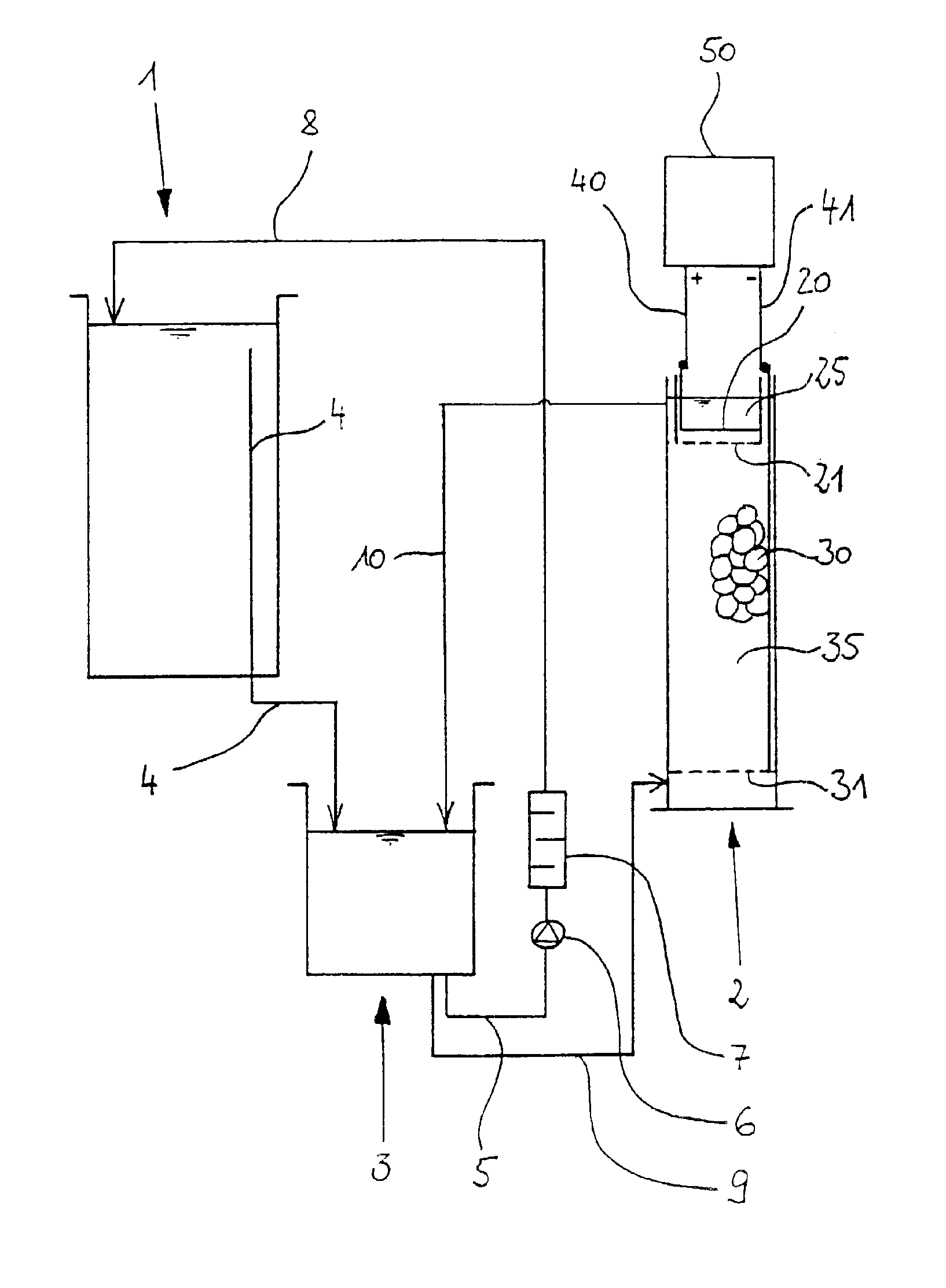Method and device for the regulation of the concentration of metal ions in an electrolyte and use thereof
a technology of electrolyte fluid and metal ions, which is applied in the direction of electrolysis components, normal temperature solutions, melt solutions, etc., can solve the problems of high supply and disposal costs of this method, inability to keep the metal content in the electrolyte fluid easily constant, and the inability to easily destroy the anode material by corrosion, etc., to achieve the effect of reducing the capacity of the metal ion generator, maintenance, and reducing the cost of production
- Summary
- Abstract
- Description
- Claims
- Application Information
AI Technical Summary
Benefits of technology
Problems solved by technology
Method used
Image
Examples
first embodiment
[0056]FIG. 2 shows a section of the metal ion generator 2. The metal ion generator 2 consists of a tubular housing 15 which is made of polypropylene for example and which is provided with a bottom 16 made e.g., of polypropylene too. On its upper front side, the tubular housing 15 is provided with an opening 17. A fluid admission 18 for the electrolyte fluid is provided in the lower region of the tubular housing 15. Correspondingly, a fluid outlet 19 is arranged in the upper region. The cross section of the tubular housing 15 is preferably rectangular, square or circular.
[0057]In the metal ion generator 2 there are located an anode space 25 and a cathode space 35.
[0058]The anode space 25 and the cathode space 35 are separated from each other by a wall 24 and by an ion permeable woven cloth 21, a polypropylene cloth in this case, that is fastened to the lower border of the wall 24. This is shown in detail in FIG. 3. As a result, the convective transport of fluid between the two spaces...
second embodiment
[0062]FIG. 4 shows the metal ion generator 2 according to the invention. In this case, the metal ion generator 2 is a receptacle with side walls 15 which form a rectangular, square or circular ground plan of the metal ion generator 2. The receptacle is furthermore provided with a bottom 16. The walls 15 and the bottom 16 are made of polypropylene. The metal ion generator 2 forms an opening 17 at its top.
[0063]The metal ion generator 2 again is provided with a cathode space 35 and an anode space 25. Furthermore, the spaces 25 and 35 are separated from each other by an ion permeable wall 21, an ion exchange membrane in this case, preferably an anion exchange membrane, which is vertically arranged. A perforated wall 26 is also provided, which endows the membrane with the required stability.
[0064]A sieve bottom 31 is arranged in the lower region in the cathode space 35, said sieve bottom being constituted by a titanium net. A bulk of metal pieces 30 (shown only in parts) rests on the si...
PUM
| Property | Measurement | Unit |
|---|---|---|
| Concentration | aaaaa | aaaaa |
| Ratio | aaaaa | aaaaa |
| Current | aaaaa | aaaaa |
Abstract
Description
Claims
Application Information
 Login to View More
Login to View More - R&D
- Intellectual Property
- Life Sciences
- Materials
- Tech Scout
- Unparalleled Data Quality
- Higher Quality Content
- 60% Fewer Hallucinations
Browse by: Latest US Patents, China's latest patents, Technical Efficacy Thesaurus, Application Domain, Technology Topic, Popular Technical Reports.
© 2025 PatSnap. All rights reserved.Legal|Privacy policy|Modern Slavery Act Transparency Statement|Sitemap|About US| Contact US: help@patsnap.com



